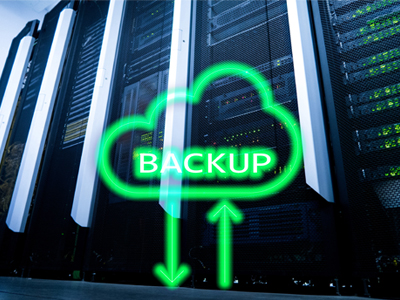It’s tempting to think you don’t need to manage your own backup solution when you switch your computing strategy to the cloud. After all, the cloud offers a high availability environment and the cloud provider makes sure your data is available for use.
Reasons to Create Backups of Cloud Data
Unfortunately, the data protection and availability that are built in to cloud don’t meet the requirements for company data backups. The provider maintains a backup copy in order to ensure the current version of your systems are available despite local cloud issues. This default backup doesn’t allow you to use backups for any of the other reasons you may need access to old data:
1. Restoring valid data. Data can be corrupted through user error or through a deliberate attack; cloud security measures don’t protect against this.
2. Accessing data in other environments. Cloud outages and normal business procedures may mean you need access to data outside the cloud.
3. Developing analytics programs. Cloud backups keep current data for local disaster recovery purposes; cloud providers don’t keep the historic data you need to run analytics.
4. Satisfying e-discovery and compliance requirements. Old data may need to be retained to meet regulatory requirements; it needs to be searchable to meet e-discovery requests.
5. Meeting backup standards. Despite the reliability of the cloud, the backup 3-2-1 rule remains a best practice: keep at least three copies of your data, use two different kinds of storage, and keep one copy off-site. Relying on cloud alone doesn’t adhere to this standard and leaves your business vulnerable.
Controlling the Cost of Backing Up Cloud Data
Cloud costs are based on utilization, so the best way to manage the cost of backing up cloud data is to use storage effectively:
1. Know your data. Backing up everything every day is effective but expensive. Know your data and how it’s used. Data that changes infrequently or is of little importance can be backed up less frequently. Data that has no historical value and isn’t under regulatory retention requirements can be discarded sooner.
2. Minimize the size of backups. Use deduplication and compression to make backups as small as possible.
3. Use the appropriate type of storage. Different types of storage offer different performance levels and incur different fees. Current backups that you may need for disaster recovery or compliance reviews can be stored on storage with better performance. As data ages and it’s less likely you’ll access it, the data should be moved to storage tiers which offer lower performance levels and lower costs. Data for non-critical systems with a loose recovery time objective can also be stored on less expensive storage tiers.
4. Have a retention strategy. The oldest data can be discarded. Define a policy for each backup and schedule deletion of unneeded backups.
5. Ask for a discount on storage. While cloud vendors don’t typically publish a discount schedule for storage commitments the same way they do for instances, discounts may be available if you ask for them.
Contact VAST IT Services to learn more about developing a cost-effective backup strategy for your cloud-based infrastructure.



